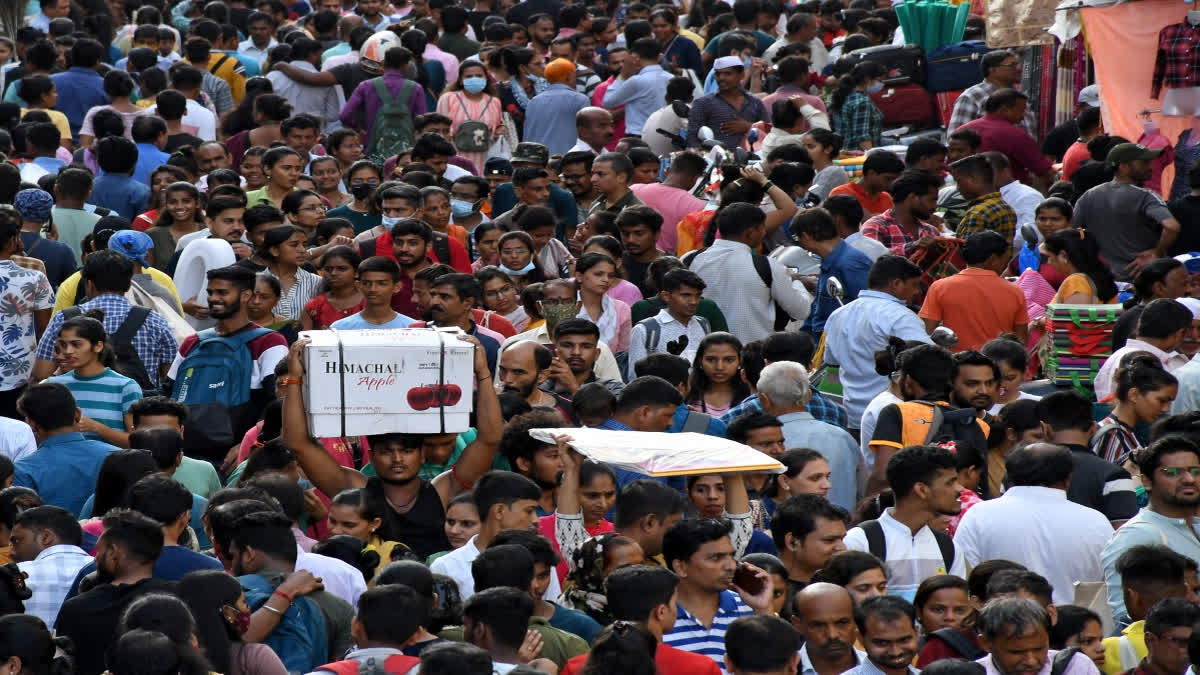The census that was due in 2021 was delayed initially for two years because of the Covid-19 pandemic. It appears factors other than the Covid-19 epidemic have also contributed to the delay. Although several countries have conducted Censuses after the pandemic period, none of them would match the size and complexity of the Indian census.
While preparing for the 2021 census, it was decided that information for updating the NPR would be collected during the house listing operations of the census. The Citizenship Act mandates preparing a National Register of Citizens(NRC) and the NPR is the first step towards this goal.
The controversies relating to the NRC of Assam and the recent amendment to the Citizenship Act (CAA) resulted in widespread criticism of the NPR and some states had said that they would not cooperate with the centre on preparation of NPR. If apprehensions about the feasibility of conducting both simultaneously is the reason for the delay, then it is very unfortunate. Considering that there was no opposition to the census per se, it could have been conducted after delinking the NPR data collection from it.
Implications of the delay:
Data used for a variety of purposes are outdated:
The census is the only source for population data at the micro level like villages and towns. Several new municipal towns have been formed in the country and the boundaries of several others changed. As urban centres attract migrants, it is not easy to predict the population for each and every town. Hence one has to depend on rough estimates based on the 2011 census for policy or plan formulation purposes. Delimitation of constituencies in urban local bodies and panchayats can not be based on such data.
It is also worth noting that an updated list of villages and towns is not available for the whole country. This is because of the non-availability of any centralised mechanism for continuous updating of the list of villages and towns and the census has been the only occasion on which the list is updated. This is important in the country as new Municipal towns are created frequently and the boundaries of existing ones changed.
Out of coverage of food subsidy:
The National Food Safety Act (NFSA) mandates the use of census data for determining the number of beneficiaries and the delay has caused crores of people being left outside its coverage. I would not like to put the entire blame for this situation on the delay in the census. The NFSA could have provided for using the estimates of the urban and rural population two or three years after the census. This could also have helped updating the number of beneficiaries more frequently.
Reservation for SC/ST:
The list of Scheduled Castes and Tribes has undergone several revisions since the last census. However, the population figures for the communities added to the list are not available even from the 2011 census. In the absence of updated numbers of SC/ST, the percentage of seats to be reserved for them in educational institutions, jobs and electoral constituencies are inaccurate. This may result in them losing some benefits due to them. Though it may be only a small fraction, it can result in significant numbers in reservation for education and for those jobs with large numbers of vacancies.
Outdated sampling frames:
Sampling frames used for surveys like NSS, SRS and NFHS are based on the 2011 census. These may be too outdated and the results from such surveys would have increasing levels of non sampling errors. This is likely to impact the estimates for urban areas more than rural areas. Even if some surveys are able to use an updated sampling frame of cities, towns and villages, it is impossible to get appropriate weighting factors based on population.
When is the next census possible?
In 2020, the census organisation was in advanced stages of preparation for starting the first phase of the census called house listing. This phase is mandatory as we do not have any sort of address lists of persons living in any area to identify the households to be enumerated in the census.
House listing operations are not being done simultaneously across the country. In a majority of states, it was being done during the month of May, about ten months prior to the census while many other states were doing it after the monsoon. The time taken to cover the entire country can be reduced to about a month or two, if the house listing is done after the monsoon in all states.
It does not appear feasible to conduct a census prior to 2026 as a lot of preparatory activities have to be repeated. The firming up of administrative boundaries, appointment of Census officials including the Directors of Census for several states, appointment and training of enumerators, etc are time consuming processes. If the decision to conduct the census is taken now, it may be possible to initiate house listing operations in 2025 and population enumeration in 2026.
A census in 2026 would mean that the delimitation exercise for fixing boundaries of Lok Sabha and State Assembly constituencies will have to wait for the next census as the constitution mandates that it be based on the 'first census taken after 2026'. It is difficult now to envisage that the government would be inclined for another census in 2031.
The constitutional provision relating to reservation of seats for women would come into effect after the delimitation of constituencies is conducted for this purpose based on the next census. One can not imagine a delimitation exercise being conducted only for the implementation of the women's reservation. The substantial provision relating to delimitation of constituencies being in Article 82, it may have precedence over the provision for delimitation introduced in Article 332 by the 106th amendment to the Constitution. If this is so, for the reservation for women to be based on a delimitation after the next census, the census should be after 2026. Alternatively, Article 88 of the constitution should be amended to refer to 'the first census conducted after 2025'.
Census process and data collected - need for a review
Since the 1991 census, a lot of information about housing and amenities available to the households has been collected during the house listing. In the 1981 census, this data collection was done during the main census phase. There are some benefits in collecting the data on housing and amenities available to the household during the population enumeration phase.
These include:
- Information on the type of housing and amenities can be easily linked to other household characteristics
- Collecting information about materials used in the construction of the building need not be done in case of non-residential buildings, which in any case may not be done properly, and
- House listing operations can focus on ensuring that all residences are covered
Large numbers of housing complexes and gated communities have come up in almost every city and even in rural areas in their peripheries. A new approach for census at such places is needed to ensure complete coverage and quality of data.
Large numbers of migrants from other states are seen in most metropolitan cities and even in rural areas of some of the southern states. As per the census practice, they are to be enumerated at their place of residence if they are found there during the census enumeration. As many of them live without their families, it is unlikely that they are found when the enumerator visits the houses. Some processes should be devised to ensure their enumeration and also to ensure that they are not enumerated at their home villages/towns.
The Scheduled Castes and Tribes living outside the state where they have been declared as SC/ST are not being enumerated as SC/ST unless their caste/tribe is also in the list of SC/ST list of the state where they live. This has been a sore point with even the then President of India K R Narayanan not being enumerated as a SC in 2001 and a similar possibility exists in future censuses too.
It would have been difficult in the past censuses to collect additional information to validate the SC/ST status. However, with the proposed use of smartphones or tablets for data collection, it may be possible to ask about the state where the person is an SC/ST and the name of the caste/tribe.
Demand for a caste census has been growing across the country. While there are several complications in collecting and tabulating data castes, some beginning has to be done. There is no need for any new questions. The one on caste/tribe present in the questionnaire may be made applicable to all instead of being restricted to SC/ST. It may take more than one census to refine the instructions to enumerators and to prepare lists of all castes usable in the data collection softwares. The data can be compiled and released with the caveats about the issues.
Some of the information collected in the census should be reviewed to reduce the length of the questionnaire and thereby helping to improve the quality of information collected.
- The concepts and definitions used for collecting data on economic activity look good on paper. But I doubt whether even a quarter of the enumerators understand and follow them. In addition, there are practical difficulties in collecting details of industry and occupation in a massive operation like census. The data on unemployment collected by census has been useless due to conceptual issues.
- Questions on the number of children ever born/surviving were first collected in the 1981 census when there were no sources for such data. Today, with NFHS being conducted almost every five years, these questions may not be required.
I hope that the census organisation has spent the time gained due to the delay to look into such possible improvements.
(Disclaimer: The opinions expressed in this article are those of the writer. The facts and opinions expressed here do not reflect the views of ETV Bharat)



